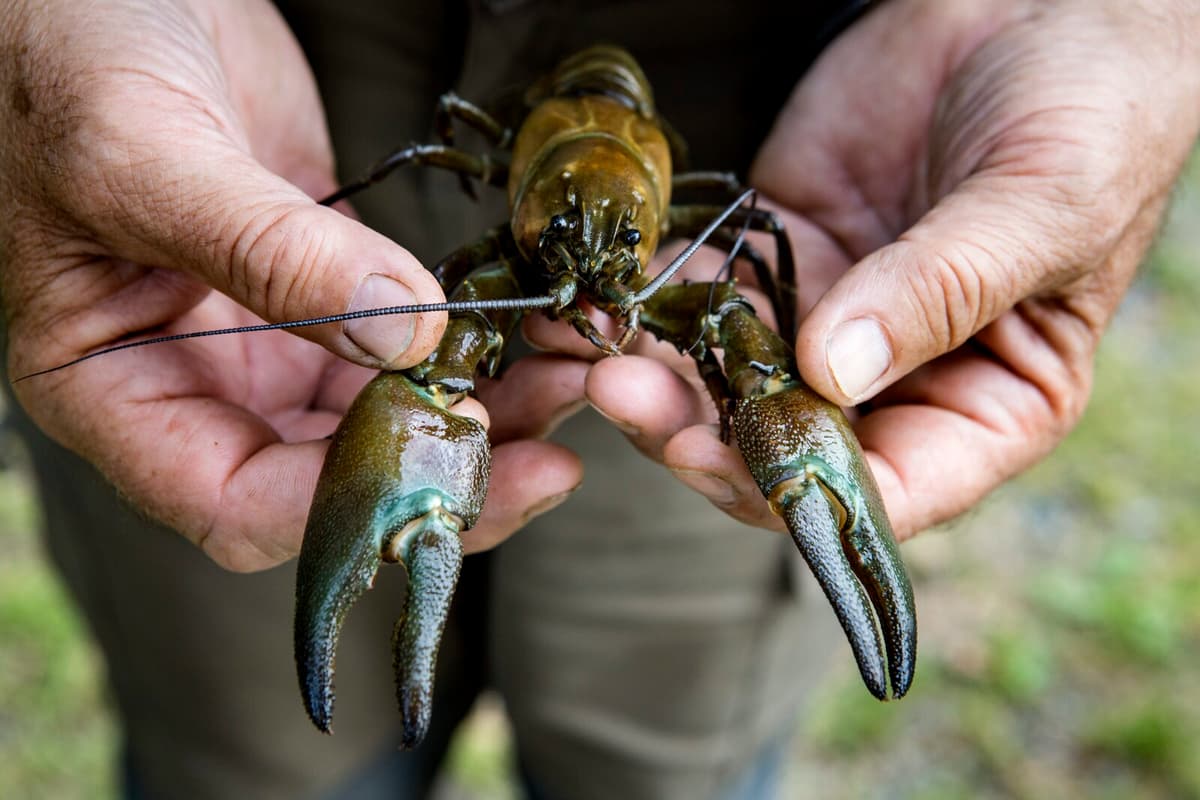Originally, there were approximately 30,000 stocks of crayfish in the country. Now, there are fewer than 600 left. At the same time, the stocks of signal crayfish have increased to between 10,000 and 15,000.
An example is from Värmland where we have been able to confirm illegal releases of signal crayfish in 239 waters from 2000 to 2024. The stocks of crayfish in Värmland and Dalsland were 430 at the beginning of the 2000s; today, only 60 are left, says Lennart Edsman, crayfish expert and researcher at the Freshwater Laboratory at the Swedish University of Agricultural Sciences (SLU).
Eat with a clear conscience
The question is what the environmentally conscious consumer should do when it, now in August, is time for crayfish party. Abstain from one or the other species?
One should eat crayfish if one can afford it. It gives them a value that makes them worth protecting. And one should eat signal crayfish too, but absolutely not spread them, says Edsman.
Approximately 70–80 percent of all crayfish we eat in Sweden are imported. The import value was 450 million kronor in 2023. Crayfish caught in Sweden were sold for 300 million kronor. A few years ago, most imported crayfish came from China, but now Spain and Turkey are larger on the Swedish market, as well as Egypt.
Hard fishing
The overwhelming majority of the crayfish that are eaten in Sweden, which are also caught here, are signal crayfish, of which a large proportion are caught in Vättern and Hjälmaren. Lately, there have been some complaints that the crayfish are too small as food crayfish.
This is partly because the fishing has been too intense. There is a great demand for crayfish in this country. Sweden is quite extreme when it comes to crayfish consumption, says Edsman.
He also points out that the signal crayfish have also been affected by crayfish plague. The signal crayfish originally comes from western North America, like the plague, which is a form of parasitic algal fungus – but that does not mean that the signal crayfish are immune to the disease, only more tolerant.
Our native crayfish (Astacus astacus) immigrated to Sweden after the Ice Age about 10,000 years ago. The signal crayfish (Pacifastacus leniusculus) is a species from western North America that was intentionally introduced to Sweden in 1960. It carries the fungus-like organism Aphanomyces astaci that causes crayfish plague, a disease that is deadly to crayfish.
The introduction was a deliberate attempt to improve the situation for crayfish fishing. Between 1960 and 1994, signal crayfish were released into thousands of waters in the country after a parliamentary decision, which meant a disaster for the crayfish. Today, all releases of signal crayfish are prohibited, but the damage has already been done. About 98 percent of the stocks of crayfish are now extinct.





